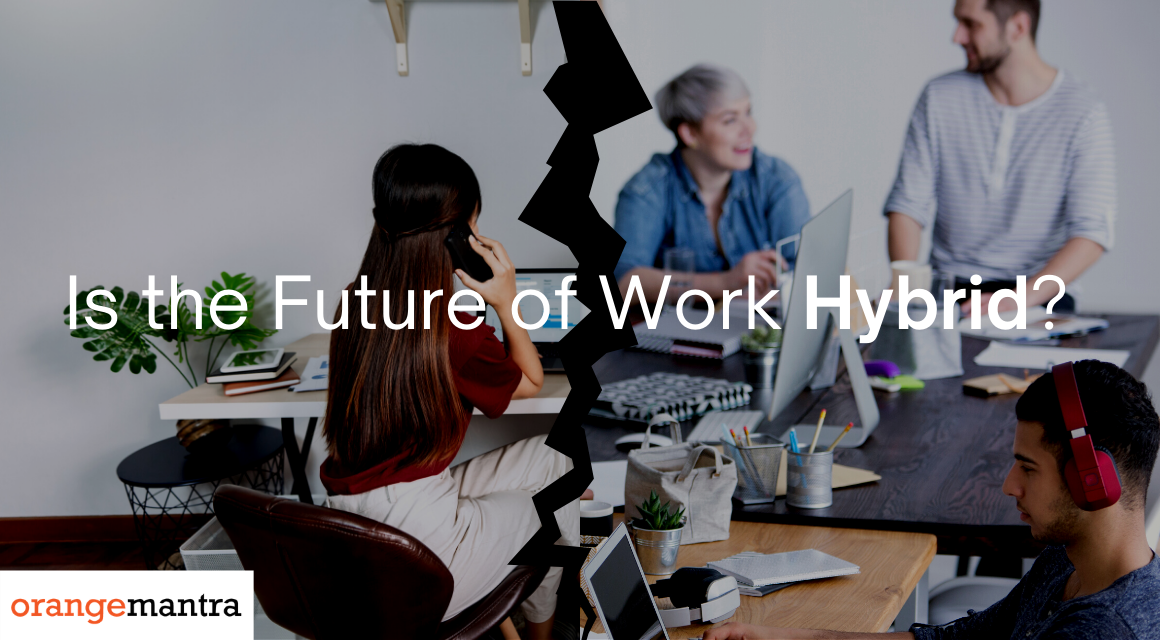
Here’s what you will learn:
Companies around the world are now gradually getting back to the office. With vaccinations rolling out, most countries plan to bring economic activities to full steam soon. Office buildings have historically been the engines of such commercial activities. But not anymore. At least, that’s what some of the top CEOs think. Many companies don’t plan to get back to the pre-pandemic work model. Instead, they’re betting big on a hybrid work – blending in-office operations with remote work.
“Somewhere in the vicinity of 60% of the workforce are choosing the hybrid option, which means their ideal is working at home and coming into the office three days a week,” said Gartner analyst Suzanne Adnams.
Ford Motor on Wednesday announced that it will launch a flexible work-from-home plan. Most of the automaker’s roughly 86,000 employees globally are expected to return to work through a new hybrid work model, CNBC reported. Developments like this also indicate that it’s not just big tech companies that are planning to rely heavily on remote work.
Table of Contents
A Big Shift to Hybrid Work Is Underway
The remote work experiment nobody planned
2020 was a global experiment in remote work. As companies and government agencies switched to remote work, the age-old relationship between where people live and work was redefined. Most of us literally worked where we live. The rapid rise of remote work has changed the way organizations operate. A growing number of sectors today depend significantly on remote work solutions for day-to-day operations.
Remote work also changed the equation between metropolitan regions and small towns. The definition of a metropolitan region is based on its labor market and commuting infrastructure. It usually comprises the suburbs and rural areas surrounding a big city. But the rise of remote work changed all of these over the past year.
Cities around the world are already feeling the effects of this remote work revolution. For instance, in American big cities, rents have fallen, and vacancies have increased substantially on the real estate market. At the same time, smaller cities in the U.S. have seen rents and home prices tick up. With even the most avid skeptics of remote work now seeing its benefits, all sectors have embraced it.
The rise of hybrid work
“A lot of people have learned that they can work at home, or that there are other methods of conducting their business than they might have thought from what they were doing a couple of years ago. When change happens in the world, you adjust to it,” said Warren Buffett, chairman, and CEO of Berkshire Hathaway.
And he’s just one among the growing number of corporate leaders planning ambitiously to adopt hybrid work. Companies are redesigning their workplace to accommodate the hybrid model.
For instance, Salesforce redesigned spaces so that employees get a desk and two side-by-side monitors. It aims to help employees collaborate seamlessly with both in-office and remote coworkers. With smart office solutions, companies can efficiently create such designs.
Redesigning offices for the hybrid model
Architects and interior designers started to think about redefining workplace design early in the pandemic. Back then, it was more about enhancing safety. That has changed. Companies are now more focused on helping employees seamlessly adjust with a remote model. And when it comes to the workplace, perhaps nothing is more important than your desk. That’s why employers are rethinking desks.
Some organizations are keeping the same-old desking intact. Maybe just increasing the distance between two coworkers’ chairs.
However, some employers are adopting “hot desking.” It’s a concept where employees don’t have a permanently assigned desk. Also referred to as flexing or desk swapping, it’s becoming a lading hybrid work trend. And that’s rational. It doesn’t make sense to have one assigned desk per employee if they only come a few times a week.
Some companies are going even more radical with “no desking.” It’s based on the idea that the workplace is not for solo work but endless collaborations. So, this design concept is focused on team and group meeting areas instead of desks. It also comprises phone booths for private communication.
Next-gen office collaboration tools
If you’re thinking going back to the office means the end of video calls, you’re wrong. Since all your colleagues won’t be in the office on the same day, expect most meetings to have a video component. Also, offices are likely to have more cameras, not just in the conference rooms.
Executives who regularly use workplace collaboration solutions believe the hybrid needs to ensure that employees at home and work feel they’re on a level playing field. Microsoft Teams, Google Meet, and Slack have been continually improving their platforms per changing needs. For instance, Microsoft is adding AR/VR and “holoportation” to digital collaborations with the launch of Mesh.
Besides, Microsoft Teams has also introduced a system called Teams Rooms that links conference rooms with remote workers. Plus, voice recognition can identify who in a conference room is talking. And then the person’s name appears on the screen.
Google is not behind in the futuristic workplace collaboration tool race. Its Workspace powers speakers and cameras for the workplace. Considering the importance of evolving collaboration needs, Google is also bringing a unique update. With this new update, the Meet phone app will better display people on video. And that’s not all from Google. A forthcoming update to Google Docs, Sheets, and Slides will enable you to overlay voice and video chat while you collaborate with teammates on documents.
Why would the pandemic’s biggest breakout be lagging? Yes, you guessed it right! Zoom, too, is upping its game for a hybrid future. After becoming a top video calling app, Zoom is now bringing its own conference-room service called Zoom Rooms.
What the hybrid future looks like
The hybrid model is key to understanding the more flexible future of work. It encompasses a host of new systems and possibilities. Professional coaches believe this emerging model gives employees more autonomy to fit around the rest of their lives. At the same time, it also makes organizations more tech-enabled, dynamic, and disruption-proof. 2020 taught us that these elements are pivotal for the sustainability of organizations of all kinds and sizes.
At OrangeMantra, our enterprise solutions have evolved dramatically over the past year. As we helped clients worldwide to mitigate the pandemic’s disruptions, we were also able to come up with more futuristic digital transformation solutions. From business continuity solutions to workplace collaboration tools, we cater to all kinds of business needs. You could follow us on social media to stay updated about futuristic workplace solutions.


